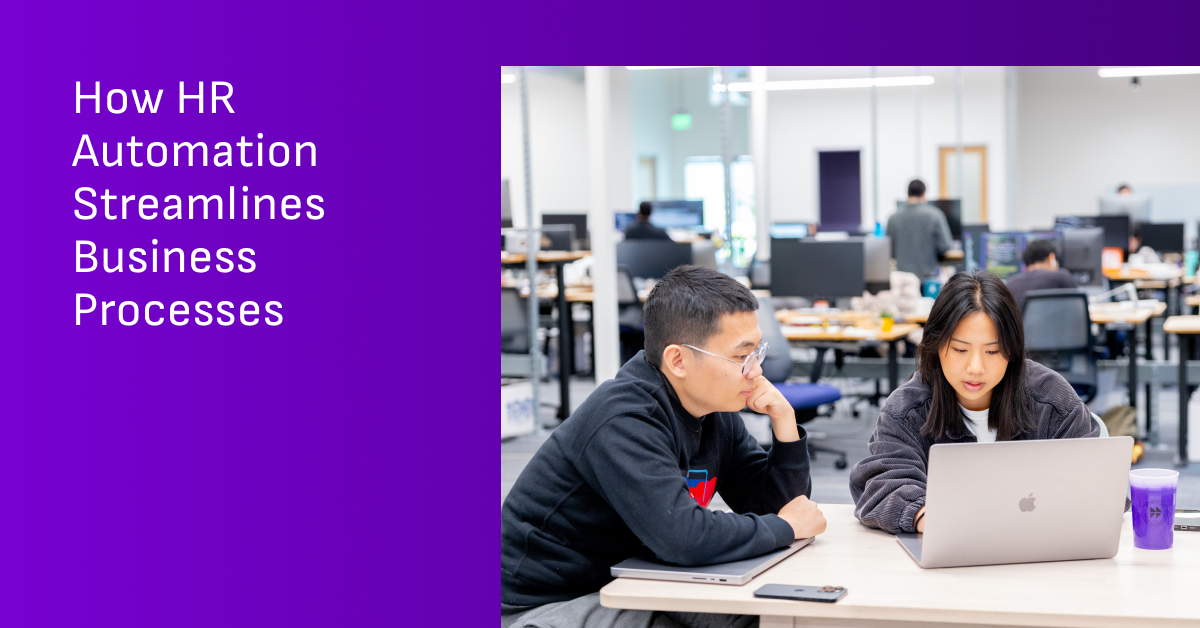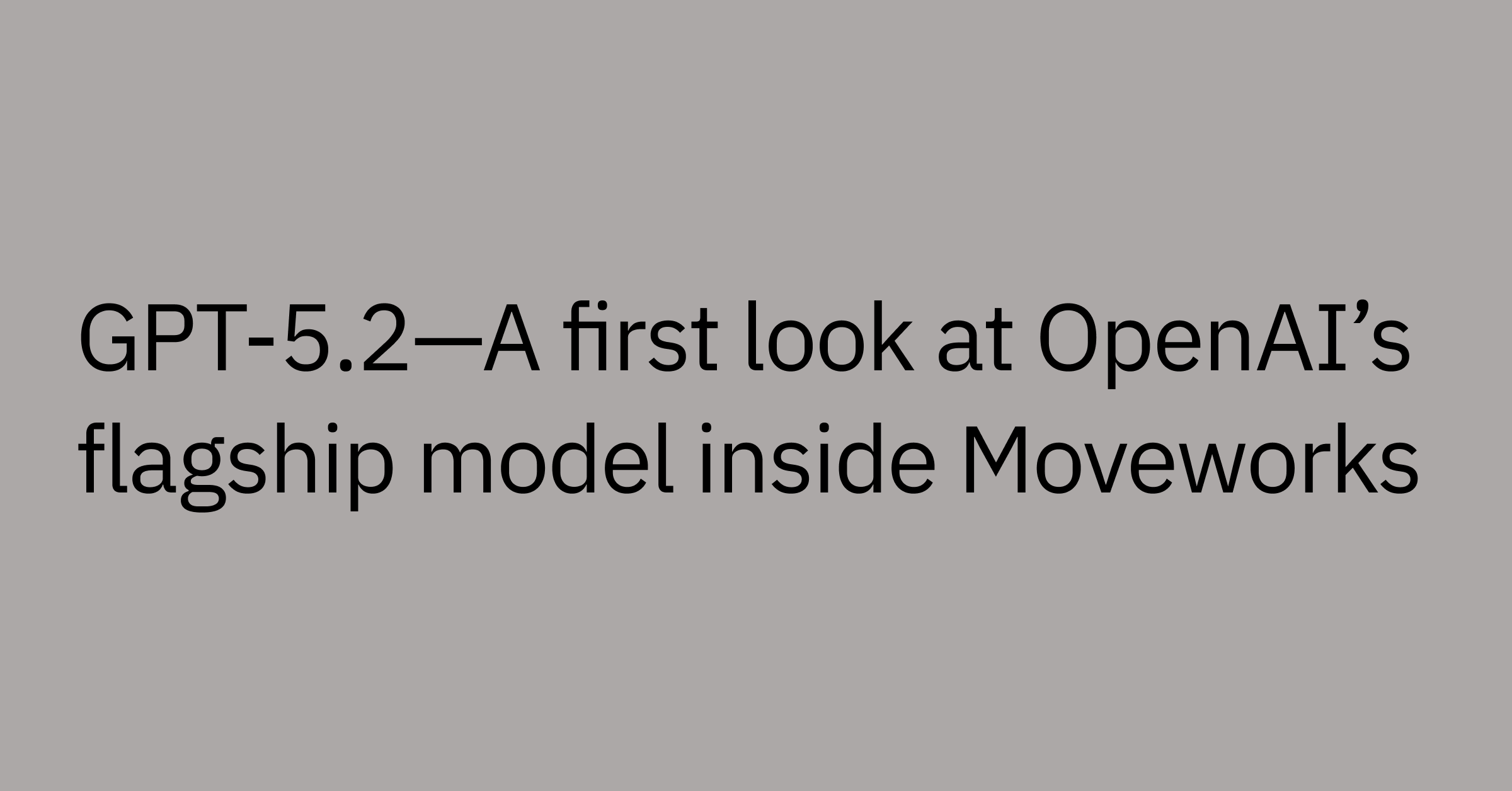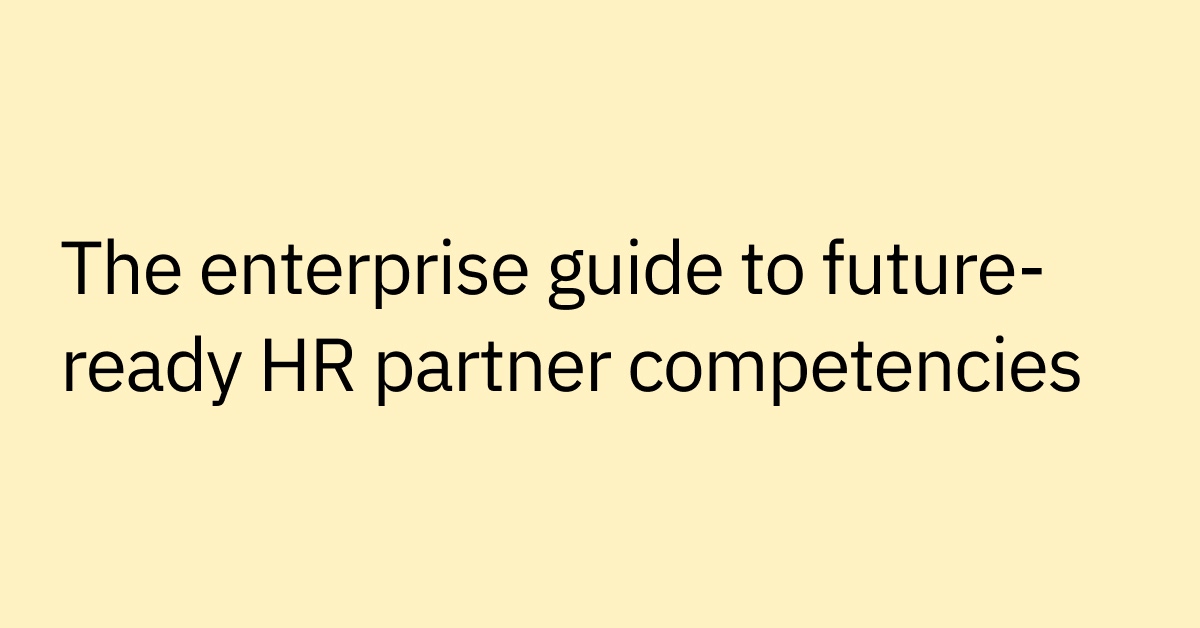Table of contents
As an HR leader, you have a lot on your plate, from hiring and onboarding new employees to supporting current employees and staying on top of all types of compliance.
You manage every step of the employee journey, but as your company grows, your HR tasks and processes are only getting more complicated.
And you’re not alone. According to multiple surveys, most HR teams report spending hours upon hours on routine, transactional tasks like interviewing, onboarding, and payroll. The result? You’re often finding yourself stuck in a loop that leaves little time to focus on big-picture initiatives.
The pressure only increases as your company goes global and the demand for instant, digital-first service, that prioritizes digital tools and technologies to streamline processes, grows. Your HR team is now also expected to deliver real-time support, stay compliant, and push forward strategic workforce plans—all while continuing to perform the admin work too.
Simply put, the old HR manual processes can’t keep up anymore.
What is HR automation?
HR automation is all about using technology to simplify and improve the types of human resources tasks, workflows, and processes that used to be done manually.
The idea isn’t exactly new—basic HR automation has been around since the first human resource information systems (HRIS) appeared in the 1960s. But today’s automation tools are much more advanced thanks to AI and machine learning.
However, the difference between HR process automation and HR workflow automation is worth noting, even though the terms are often used interchangeably.
HR process automation focuses on digitizing specific tasks, like turning paper forms into digital ones. HR workflow automation goes further by linking multiple processes into smooth, intelligent workflows that can connect across different systems and departments.
How does HR automation work?
HR automation uses technology to create intelligent systems that streamline tasks and decision-making. It relies on software to set up automatic actions triggered by specific events or conditions.
These workflows range from sending onboarding documents to new hires to AI-driven processes that analyze data and make decisions autonomously.
In recent years, HR automation has advanced with AI and machine learning. Early automated HR tools could take over basic tasks, but today’s systems can:
- Respond to natural language requests
- Learn and improve from past interactions
- Make context-aware decisions
- Connect systems and data sources
- Provide predictive analytics and insights
By automating repetitive tasks like data entry and benefits admin, HR professionals can focus on strategic priorities like talent development and organizational planning, driving greater value for the business.
Benefits of HR automation for human resources
Adopting HR workflow automation isn’t just about staying up to date with technology or dropping in a solution and hoping it works. It’s about actually changing the way your organization works and delivers value.
With growing pressure to do more with less (while keeping employees happy), automation has become essential for driving success.
Today’s HR automation tools offer more than just time savings. They have a wide-reaching impact with plenty of use cases, improving everything from employee satisfaction to compliance management—and even helping with smarter decision-making across the entire business.
Increase HR team efficiency and productivity
One of the biggest perks of automating HR workflows is boosting your team’s efficiency. Organizations with HR automation can save days’ worth of their team's time spent on repetitive tasks like payroll, as was the case for audio and media company Communicorp UK.
Take managing employee documents, for example. Without automation, HR staff spend hours updating records, filing paperwork, and ensuring everything is accessible.
Automated workflows handle this from behind the scenes, reducing human errors and freeing team members to focus on strategic tasks like improving employee programs or talent planning.
But the benefits extend beyond HR, as employees across other departments experience:
- Faster responses to questions
- More accurate, accessible data
- Quicker turnaround on tasks
- Better resource optimization for strategic projects
Automatically address employee queries
Employees want quick answers to their HR questions, and HR automation, especially with AI, makes that possible. AI-powered systems offer 24/7 support, responding to employee queries in real-time and making HR operations smoother and faster.
Just ask Palo Alto Networks, which saved 351,000 hours of productivity with on-demand AI assistance.
Faster responses mean employees spend less time waiting for answers about benefits, policies, or procedures and more time focusing on their work. Here’s what automated query handling brings to the table:
- Consistent and accurate answers to common questions
- Multilingual support for global teams
- 24/7 availability, no matter the time zone
- Scalable support to match your company’s growth
- Less workload for your HR team to manage
Make compliance simple
Integrating AI automation into HR processes makes compliance management easier. With today’s complex regulations, staying compliant is more challenging and important than ever.
In 2024, the SEC imposed more than $600 million in non-compliance costs, including fines, disruptions, and lost productivity. Automation reduces these costs by creating reliable, consistent processes to keep compliance on track.
Beyond avoiding penalties, automation builds trust, reduces risks, and lays a foundation for growth. As your organization scales, your compliance can scale with it.
Here’s how automated workflows help:
- Automatically update and maintain accurate employee records
- Easily manage certifications and employee training requirements
- Generate compliance reports on demand
- Provide audit trails for HR actions
- Send reminders for compliance deadlines
- Standardize policies and processes
How artificial intelligence has impacted HR workflows and processes
Integrating artificial intelligence into HR workflow automation represents a transformative leap forward, fundamentally changing what's possible in human resources management. While traditional automation tools could handle structured, repetitive tasks, AI brings unprecedented intelligence and adaptability to HR processes.
According to a report by Sage, most HR leaders think AI will bring serious value to HR, especially for recruiters who want to improve their time-to-hire KPIs.
AI can make this process easier by automatically screening and qualifying applicants, giving recruiters a more manageable list of candidates to work with, as they struggle to manage the deluge of resumes they are often presented with.
In addition, 50% of HR leaders who have already implemented AI use it to boost employee experience through upskilling initiatives. Meanwhile, 93% believe AI is an effective way to cut costs.
HR tasks could be automated with just a few tweaks to current processes, such as Slack integrations, which have reported 3% reductions in time-to-hire.
How an AI assistant supports HR professionals
AI assistants are transforming HR by combining automation's speed with AI’s flexibility. These tools go beyond handling tasks, working alongside HR teams to tackle complex requests, pull data from multiple systems, make context-based decisions, and improve over time.
Some solutions can even run processes independently and provide strategic recommendations. Employees can use natural language commands to look up policies, submit requests, update details, manage benefits, handle paperwork, and get personalized advice. It’s an effective way to streamline workflows and boost efficiency.
For those concerned about data security, enterprise-grade solutions include strong privacy and transparency features, keeping HR teams in control without sacrificing the benefits of automation.
Learn how Moveworks can simplify your HR workflows without compromising security or control, letting HR teams focus on strategic initiatives.
9 examples of HR workflow and process automation
The real impact of HR automation shines through when we look at how it transforms everyday tasks. With workflow automation, especially when powered by AI, nearly every part of HR operations can be streamlined, making things smoother for both employees and HR teams.
These examples show how advanced automation tools can create smart, connected workflows across departments and systems. They highlight opportunities to cut down on manual work, boost accuracy, and improve the overall employee experience.
1. Talent acquisition and recruiting
Hiring top talent requires speed, accuracy, and a personal touch—all things AI-powered workflow automation can handle easily. Companies using advanced recruiting automation have seen a 26% lift in hiring efficiency.
With automated workflows, you can quickly and easily take care of tasks like:
- Posting jobs across multiple platforms
- Screening and qualifying candidates
- Scheduling and coordinating interviews
- Communicating with candidates
- Running background checks
- Generating and tracking offer letters
- Sending out candidate surveys
2. Employee onboarding
The onboarding process is a big deal. It sets the tone for an employee's entire experience with your company.
Jamf has shown how AI-powered automation can completely transform this step, reducing its onboarding time while keeping everything consistent and thorough. Their automated workflows handle tasks across departments, taking care of approvals and requests without the need for manual effort, including:
- Setting up system accounts and providing access
- Handling equipment and software requests
- Creating and sending welcome packages
- Delivering training materials
- Collecting required documentation
- Kicking off benefits enrollment
- Coordinating tasks across teams
3. Employee offboarding
Jamf’s approach also shows how automation can make offboarding smoother, secure, and compliant while keeping things professional.
Their AI assistant takes care of the tricky stuff, like revoking system access, managing equipment returns, and wrapping up final paperwork—tasks that used to require a lot of back-and-forth between HR and IT.
Offboarding becomes much easier with automated workflows, which can handle things like:
- Instantly deactivating system access
- Managing equipment returns
- Scheduling exit interviews
- Processing final payroll
- Terminating benefits
- Coordinating knowledge transfer
- Handling compliance paperwork
- Connecting employees to alumni networks
4. Performance management
Performance management works best with ongoing feedback and data-driven insights—areas where automation can make a big difference. AI-powered tools are changing annual reviews into continuous, dynamic processes.
Interestingly, companies using automated systems have reported seeing a boost in sales productivity and overall improvement in customer satisfaction, which ultimately impacts performance.
Some of the key capabilities of automated performance management include:
- Setting and tracking goals
- Scheduling performance reviews
- Collecting 360-degree feedback
- Coordinating skills assessments
- Creating development plans
- Managing recognition programs
- Generating performance analytics
- Recommending relevant training
5. Benefits administration
Managing benefits the old-fashioned way can be complicated, time-consuming, and prone to mistakes or miscommunications. However, automated workflows make these processes faster and more accurate, boosting employee satisfaction.
Organizations save time, improve enrollment accuracy, and reduce compliance risks by automating benefits administration. Automation can help with:
- Open enrollment
- Verifying eligibility
- Handling plan changes and selections
- Updating life events
- Calculating premiums
- Processing claims
- Tracking wellness programs
- Verifying dependents
6. Payroll
Payroll, where getting things right and on time matters, is a key area where HR teams can streamline workflows. According to a study conducted by Dayforce, using AI tools like automated payroll systems can cut down payroll processing complexities and reduce risk. This is especially helpful for enterprises with more complicated payroll needs.
Payroll automation systems can handle tasks like:
- Calculating wages and deductions
- Processing tax withholdings
- Managing direct deposits
- Generating pay stubs
- Handling expense reimbursements
- Tracking overtime and bonuses
- Managing leave accruals
- Generating compliance reports
7. Benefits and compensation, total rewards
Total rewards automation makes it easier for organizations to manage all aspects of employee benefits and pay.
According to WorldatWork, AI can save teams time by taking care of repetitive tasks like writing job descriptions, answering common service questions, and streamlining communication. This allows HR professionals to focus on more strategic, people-centered work.
Plus, AI makes personalization possible at scale, helping employees feel valued and fostering loyalty (and, ultimately, employee retention).
With advanced automation systems, you can easily:
- Organize salary structures
- Track compensation updates
- Calculate bonuses
- Manage equity compensation
- Keep an eye on benefits usage
- Create total rewards statements
- Analyze market compensation trends
- Adjust variable pay
8. Access to internal apps and systems
Managing systems access is where HR and IT workflows meet, and automation can make things much smoother while boosting security. A great example is Medallia, which used Moveworks to streamline its IT help desk’s self-service processes and improve employee engagement.
Instead of new employees sitting around idle, waiting for access to the tools and systems they need to do their jobs, you can use an AI solution to automatically:
- Set up user accounts
- Assign access levels
- Manage security clearances
- Allocate software licenses
- Automate password resets
- Review system access
- Keep compliance documentation in check
- Terminate access when needed
9. Training and development
Automation can take learning and development to the next level, helping organizations build personalized, scalable training programs that meet each employee’s unique needs.
With automation, companies can simplify content delivery, track real-time progress, and offer employees targeted resources to address skill gaps and achieve career goals.
AI-powered training automation enables you to:
- Personalize learning paths
- Track certification requirements
- Schedule training sessions
- Monitor course completion
- Generate progress reports
- Deliver bite-sized learning content
- Manage compliance training
- Assess skill development
Streamline workflows with an AI assistant for human resources (and everyone else)
AI-powered HR automation is streamlining how organizations manage teams. By cutting out your time-consuming tasks and repetitive HR functions and enabling more intelligent, data-driven decisions, these HR systems can empower your team to focus on what matters: delivering real results.
Moveworks’ AI Assistant is taking HR automation to the next level by helping HR departments simplify processes and improve the employee experience. Powered by advanced agentic AI and machine learning, Moveworks makes it easy to automate manual tasks, facilitate compliance, and provide fast support—all while freeing up more time for strategic goals.
And it’s not just for HR. Moveworks supports your entire organization, from IT to finance, making it an excellent fit for enterprise businesses.
From onboarding new employees to tackling IT requests and managing sales workflows, Moveworks offers a unified platform that grows with your business. By connecting your systems, data and people, Moveworks helps create a more collaborative, flexible, and efficient workplace for all.
Ready to see what Moveworks can do for your HR team? Schedule a demo today and discover the power of Moveworks’ AI Assistant.



